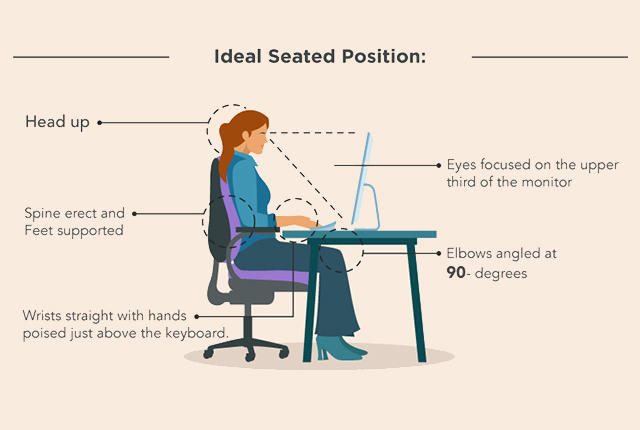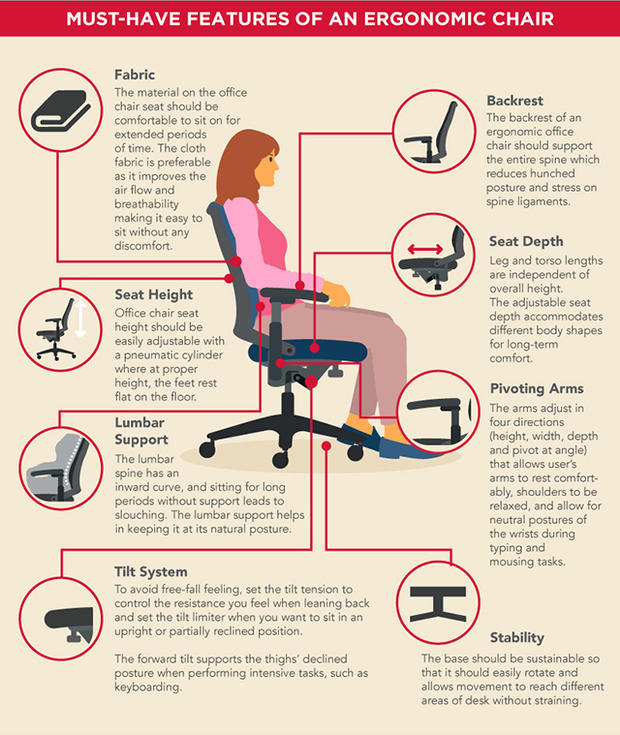Here's How You Should Really Sit in Your Chair

By:
The "ideal seated position" doesn't always feel natural, but it's the best thing for your health and productivity. As it happens, I'm currently sitting at my desk, and I am doing it all wrong.
I'm staring down at a screen, back hunched over, and my elbows are at no particular angle. Don't be like me; be like the woman in the graphic below, created by the marketing firm Omnicore.
 Mental Floss - mentalfloss.com
Mental Floss - mentalfloss.com
According to Omnicore, sitting in the "ideal seated position" is the best thing you can do to avoid health issues (e.g. back pain, neck pain, wrist strain, leg discomfort) associated with poor posture. It involves sitting with your head up, feet on the floor, spine straight, elbows angled at 90 degrees, and eyes focused on the top third of the screen.
If that seems like a lot of work, here are some statistics about poor posture in the workplace that are meant to scare you straight — or your spine straight — so to speak.
 Omnicore - omnicoreagency.com
Omnicore - omnicoreagency.com
The average person sits for approximately 1,800 hours per year in a work context, according to Omnicore's data. Poor work ergonomics — especially posture — are the leading causes of Repetitive Strain Injury, which is the most common work-related injury in the United States. Companies spend between $45,000 and $77,000 per year to cover the costs of these injuries, which is to say nothing of the personal health care costs that uninsured employees can incur.
Thankfully, the marketing firm that compiled this research, Omnicore, also proposed a solution: ergonomic chairs.
 Omnicore - omnicoreagency.com
Omnicore - omnicoreagency.com
Omnicore suggests that your ergonomic chair have fabric, adjustable height, a backrest with lumbar support, pivoting armrests, and stability. That way you're able to maintain proper posture with the right pressure distribution so you can navigate your office space naturally and safely.
There are many benefits of ergonomic chairs.
According to research cited by Omnicore, introducing ergonomic chairs into the workplace can result in a 75 percent decrease in absenteeism, a 60 percent decrease in work-related injury claims, and a 40 percent increase in productivity.
